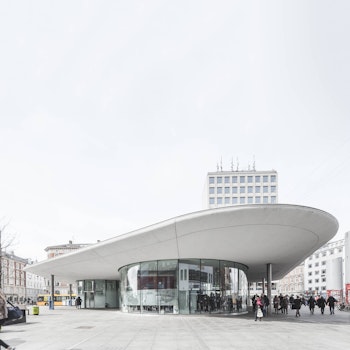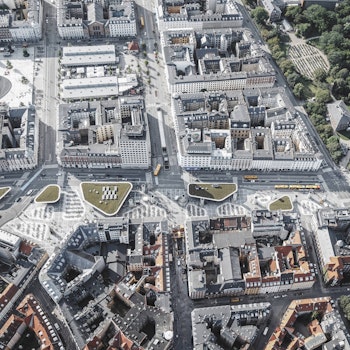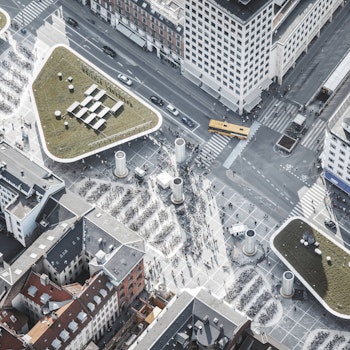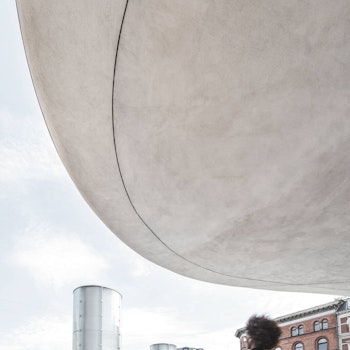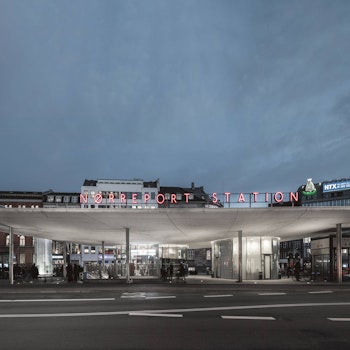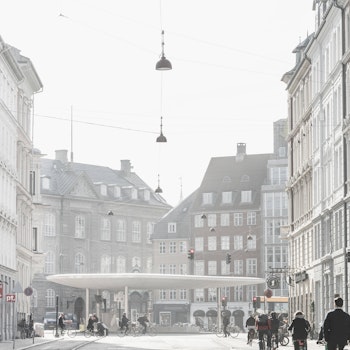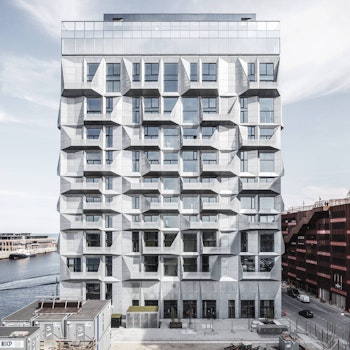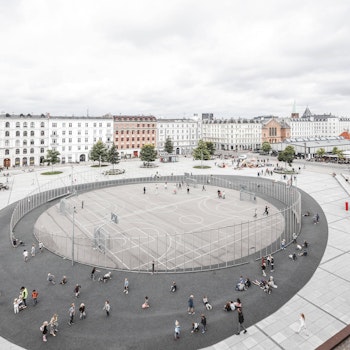ARCHITECT
COBE
Nørreport Station is the busiest train station in Denmark, with more than 250,000 people passing through it daily. Since the 1960s, the bustling station developed into a vast and chaotic intersection in the middle of the city. The new station is composed of a series of rounded, floating roofs, mounted on distinctive glass pavilions. A study of pedestrians’ preferred routes formed the basis of the station’s new design, providing an open and welcoming public space with specific consideration for the needs of cyclists and pedestrians. Nørreport Station is not only a station but an urban landscape for people. It transforms Copenhagen’s busiest space into a single unified flow and becomes an integrated part of the pulsating city around it.
Before the car invasion, Nørreport Station was a lively place where bikes and people took center stage. The station later became a chaotic distribution line of trams, cars and buses, neglecting pedestrians and cyclists.
In Copenhagen, 70% of all movement is on foot or bike or by public transport. Nørreport Station is the busiest intermodal exchange point between traffic modes in Denmark, connecting the historic city center with all of the adjoining neighborhoods by train, metro and bus.
The station pavillions and bike parking were arranged in between the main flow lines, which provides optimal access without disrupting the natural flow of movement.
Nørreport Station used to be an isolated chaotic island surrounded by traffic, making it difficult to access for pedestians. Today, the station has an extended public space and a new and improved connection to the main shopping street in the medieval city of Copenhagen.
Nørreport Station was once a difficult place to navigate – a traffic junction where people had to wait patiently for all the cars and busses to pass. Now it functions as an important public space where pedestrians have reclaimed priority, and the cars have to take other routes.
In Copenhagen, 60% of all daily trips to work and studies are made by bike, resulting in a need for large-capacity bicycle parking at Nørreport Station. This challenge provided an important premise for the design of the public spaces.
Thousands of bikes used to clutter the space around Nørreport Station. Without an efficient structure, they were randomly scattered, creating a messy and dysfunctional public space.
The sunken bicycle beds offer a clear indication of where to park and where to walk. At the same time, the lowered bicycle sections provide a calm visual expression and serve as rainwater containment areas in case of extreme weather events.
The roofs hover above the station elements providing cover for round glass buildings, parked bicycles and the entrances to the underground platforms.
source: Office web
YOU MAY ALSO LIKE

